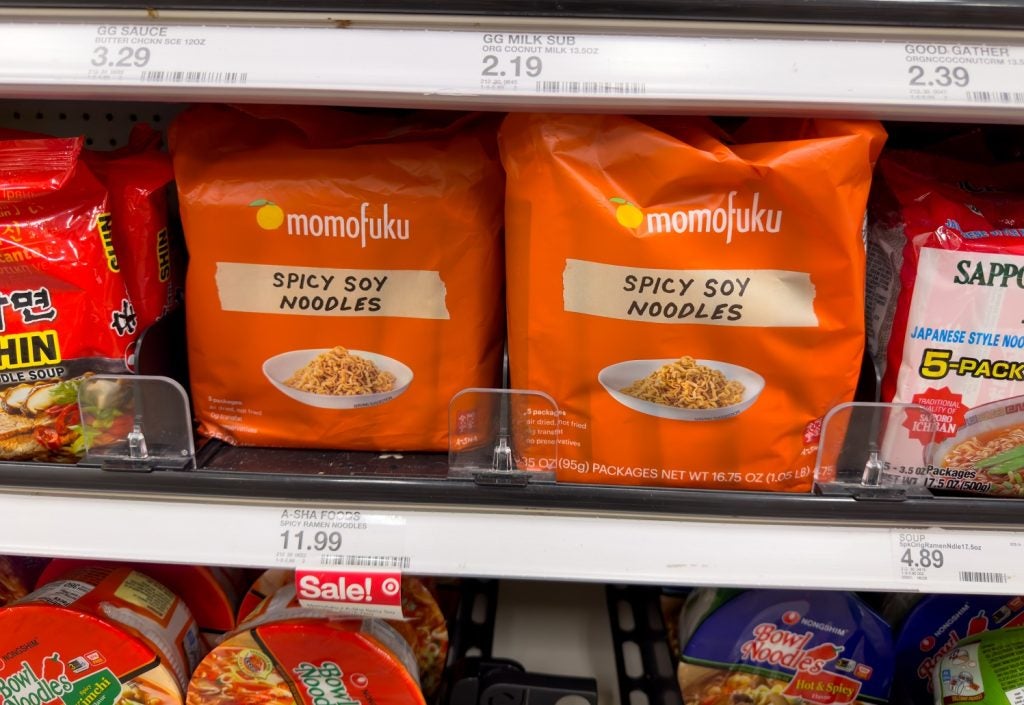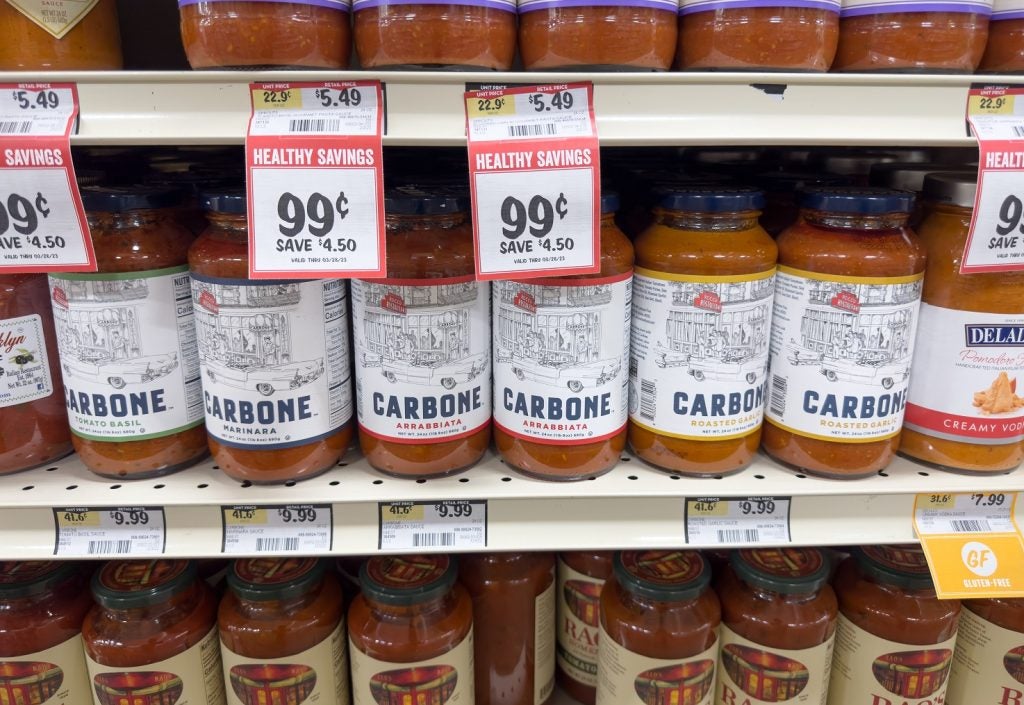Restaurants have been selling their products – think Marie Callender’s frozen entrees, White Castle sliders and Rao’s pasta sauce – in grocery stores for decades. However, since the depths of Covid-19, branded CPG products sold under restaurant brands have become fully-fledged members of the packaged foods universe.
The start of today’s ‘restaurant CPG’ explosion can be traced to the start of the pandemic when restaurants were forced to find new ways to generate sales because their core business model was disrupted by the shutdown.
Along with jumping into the takeout food business in a big way, many restaurants that had yet to launch CPG lines into grocery started creating branded food products and selling them online via their websites. The next step has been to move into retail stores in a major way.
In 2024, restaurants are increasingly becoming grocery store brands and the restaurant CPG model is becoming viewed by many foodservice operators as a solid way to diversify their businesses and extend their reach nationally – and even internationally.
A good example of this is Major Food Group-owned restaurant chain Carbone, which has a handful of restaurants in a few big US cities and internationally – a single revenue source and a small reach – but, since launching its six SKUs of red pasta sauce in 2021, it’s sold more than 2m jars across more than 10,000 grocery stores nationwide, according to retail data source SPINS. That level of sales represents significant diversification in the form of an entirely new revenue source and a major extension in customer reach.
Carbone pasta sauce could be a Rao’s pasta sauce in the making. Rao’s, a major restaurant CPG success story, was launched out of the eponymous New York City restaurant by Frank Pellegrino in 1992. It was a very successful artisan brand for many years following that, gaining shelf space in specialty stores and upscale grocery markets. Sovos Brands acquired Rao’s in 2017 and took it mass market, extending the brand to other products and adding mainstream grocery chains, growing it by nine times over six years. Rao’s was the flagship brand of Sovos Brands, which was sold to Campbell Soup Co. last year for $2.7bn (the deal remains subject to competition approval).
Restaurant giants like Taco Bell (packaged sauces, taco shells, Craving Kits meal kits, beverages like Baja Blast in partnership with Mountain Dew and more) Chick-fil-A (sauces), Chuck E. Cheese (frozen pizza), PF Chang’s, Panera Bread and many others are going big in restaurant CPG, too.
These chains and others are looking to extend their brands beyond the four walls of their restaurants and even beyond into digital ordering occasions, targeting not just customers’ restaurant spending but their overall eating budget. It’s all about share-of-stomach rather than share-of-channel.
Restaurant CPG is fast becoming a legitimate competitor to big and emerging brands in the battle for shelf space. Often a restaurant’s cachet will help its CPG brand – be it from prestigious smaller restaurant operators like New York City’s Milk Bar (ice cream and cookies) and Momofuku (seasonings and noodles) or mega-chains like Taco Bell and Chick-fil-A – win shelf space over a line extension from a major brand or a new item from an emerging brand.

However, beyond this competitive advantage, the keys to success for restaurant CPG brands aren’t any different than for any CPG brand. The restaurant’s brand will in most cases help with initiating consumer trial but it won’t guarantee repeat sales.
The key question regarding restaurant CPG is two-fold. First, does it have staying power? Second, how big of a competitive threat does it pose to major and emerging CPG brands?
The restaurant CPG trend does have staying power but only if those restaurants playing in the CPG world follow the same, proven, rules of the game. In other words, restaurants, be they single independent stores or national mega-chains, must act as CPG companies for that part of their business if they want to succeed. This means separate CPG teams composed of people with experience in the business. It might also mean partnering with an established CPG company like Starbucks has done with its coffee and related products. Nestle has been Starbucks’ CPG partner since 2018. Prior to 2018, the coffee chain’s CPG partner was Kraft.
For many years before the pandemic hit, the balance of power between food-at-home (grocery retail and CPG industry) and food-away-from-home favoured restaurants. More Americans were eating food away from home than indoors. The pandemic tipped that balance back to food-at-home and food inflation over the last few years has helped it remain there. As a consequence, restaurants see the grocery store as one way to redress this change in the balance of power. The future of restaurant growth includes the grocery store.
The competitive threat of restaurant CPG is limited
However, restaurant CPG poses only a small threat to major and emerging CPG brands. Most of that threat involves the battle for shelf space I noted earlier.
Although it’s here to stay – and it will grow – I see restaurant CPG remaining a niche part of the overall CPG taxonomy. That taxonomy includes the big brands (Kraft, Quaker Oats, Heinz and the like), emerging brands, start-up or early-stage brands and private label.
The biggest competitive challenge to major brands isn’t restaurant brands but retailer or private-label brands.
Restaurant CPG is more of a threat to emerging and early-stage CPG brands than it is to the majors but I see it as a draw. There’s room for both in the CPG world.
Inflation has been a behind-the-scenes driver of restaurant CPG because it’s played havoc on restaurant revenue and the economics of the business. The overhead costs and razor-thin margins in the restaurant business over the last few years have made the highly competitive CPG business look pretty good to many operators. When inflation ends, though, that calculus could change, even though so many restaurants are committed to their CPG portfolios.
Retailers have opened shelf space to restaurant brands but that too could change. Before Covid-19, grocers were giving away a lot of big brand shelf space to emerging and even start-up CPG brands but, come 2020-2021, much of that space was given back to the majors because consumers were demanding more traditional brands.
That said, restaurant CPG is injecting new excitement into the industry, just as emerging and early-stage brands have been doing for quite some time.
Some innovative things are appearing from restaurant CPG brands, which major and emerging brands can learn from. These include smart collaborations with outside companies and retailers and the effective use of social media, particularly the platform TikTok.
Large chains like Taco Bell, Chick-fil-A and others already in the space will increase their efforts, including growing product offerings and points of distribution. Partnering with mega-retailers like Walmart and Target will become more and more common for these restaurant giants.
Moreover, smaller restaurants will launch CPG brands to add a new revenue stream to their operations and extend their reach because the economics of adding restaurant locations is very difficult today.
Lastly – and this might become a full-circle moment – we’re going to see more partnerships between major CPG companies and big restaurant chains (and even between smaller restaurants and emerging brand CPG companies) as those incumbents in the space and new entrants to the packaged goods business alike see the benefits these companies can offer them as partners.









